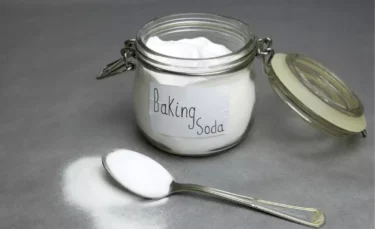Feel Like Throwing Up? What You Should and Shouldn’t Do According to Doctors
By Dr. Nayana Shetty +2 more

Get,

to manage your symptom
Get your,


4 Cr+ families
benefitted

OTP sent to 9988776655



You’ve successfully subscribed to receive
doctor-approved tips on
Whatsapp

Get ready to feel your best.

Hi There,
Download the PharmEasy App now!!


Register to Avail the Offer
Send OTPBy continuing, you agree with our Privacy Policy and Terms and Conditions

Hi There,
Sign up on PharmEasy now!!
Trusted by 4 crore+ families

OTP sent to 9988776655



You have unlocked 25% off on medicines




Code: NU25
By Dr. Nayana Shetty +2 more
Table of Contents
Vomiting is a natural reflex designed to protect the body by expelling harmful substances, such as toxins or spoiled food. In certain rare and medically appropriate circumstances, inducing vomiting may be considered, for example, when advised by a healthcare professional and other interventions have proven ineffective.
Some individuals may attempt to trigger vomiting by stimulating the gag reflex, consuming warm salt water, or through exposure to unpleasant stimuli. However, it is essential to understand that self-induced vomiting should only be done when absolutely necessary and always under medical supervision. Improper or repeated use can pose serious health risks1.

Reminder: The information shared here is for educational purposes only and the reader should consult a registered medical practitioner before implementing any changes to their health routine.
Inducing vomiting is a serious action and should only be considered in specific circumstances, under medical guidance as follow2:
If someone has ingested a potentially harmful substance, inducing vomiting might seem like a helpful response. However, it is vital to seek immediate advice from a healthcare professional or poison control centre before taking any action. In some cases, inducing vomiting can cause further harm, particularly if the substance is corrosive, sharp, or toxic when re-exposed to the oesophagus or mouth.
If you accidentally ingest poison or a toxic chemical, your first step should be to seek immediate medical advice. While inducing vomiting might seem like a quick remedy, it is not always appropriate and, in some cases, can cause further harm. Always consult a healthcare professional,such as your doctor or contact a certified poison control centre for guidance. These professionals can assess the situation and advise the safest course of action based on the substance involved.
If you are unsure whether you have consumed spoiled or contaminated food, your body may naturally attempt to expel it through vomiting as a protective response. In some cases, encouraging this reaction may seem beneficial. However, it is important to seek medical advice before attempting to induce vomiting, as it may not always be the safest or most effective course of action depending on the situation and symptoms.
In cases of eating disorders such as bulimia nervosa, individuals may feel compelled to induce vomiting after episodes of overeating, often in an attempt to lose weight or feel “cleansed” of the food consumed. This behaviour is harmful and can lead to serious physical and mental health consequences. It should never be considered a solution or coping strategy. If this reflects your experience or that of someone you know, it is vital to seek professional help. Support from medical professionals, mental health specialists, or eating disorder services can make a significant difference in recovery and overall well-being.
In rare cases, and only under the guidance of a healthcare professional, inducing vomiting may be considered appropriate. If such a need arises, the following methods are sometimes used in clinical or emergency settings. It is crucial, however, to consult a doctor or poison control centre before attempting any of these approaches:

One of the most common methods to induce vomiting is by manually stimulating the gag reflex. This involves gently inserting clean index and middle fingers into the back of the throat to trigger the reflex. If done correctly, it may result in vomiting almost immediately3.

Another traditional method involves drinking warm salt water. To try this, dissolve two teaspoons of salt in a glass of warm water and drink it quickly. The high concentration of salt may irritate the stomach lining, triggering nausea and possibly inducing vomiting as the body attempts to expel the excess sodium2.

Gargling with warm water for several minutes may help stimulate the gag reflex, which can lead to nausea and potentially induce vomiting. Some believe that adding salt to the water may intensify the effect, though this is not medically recommended without professional guidance2.

If using your fingers feels uncomfortable, a clean toothbrush may serve as an alternative to trigger the gag reflex. Gently rubbing the back of your tongue with the bristles can produce a similar effect, potentially leading to vomiting3.

If using your fingers feels uncomfortable, a clean toothbrush may serve as an alternative to trigger the gag reflex. Gently rubbing the back of your tongue with the bristles can produce a similar effect, potentially leading to vomiting.

Gargling with raw egg whites is an unconventional and often unpleasant method that some believe may trigger vomiting. The strong smell and texture can induce nausea in certain individuals, potentially leading to vomiting as a reflexive response2.

In some cases, strong emotional or sensory stimuli, such as recalling an unpleasant sight, smell, or memory can provoke nausea and potentially lead to vomiting. This reaction stems from the body’s natural protective mechanisms, where the brain responds to perceived threats by attempting to expel them.

A mixture of mustard powder and water has traditionally been used as a home remedy to induce vomiting. Mustard is believed to have mild emetic properties, which may cause nausea and, in some cases, lead to vomiting when consumed in large amounts4.

Sodium bicarbonate, commonly known as baking soda, may cause nausea and vomiting when consumed in certain quantities. This reaction is often due to its ability to disrupt the body’s acid-base balance5.

Bloodroot is a plant known for its traditional medicinal uses, and in moderate doses, it has been reported to induce vomiting due to its emetic properties. However, it is important to note that bloodroot is a potent herb, and excessive or unsupervised use can be toxic and lead to serious health complications, including damage to the gastrointestinal tract and other organs6.
Most individuals who engage in self-induced vomiting are aware of its harmful effects and often express a desire to stop. This behaviour can lead to a range of health complications, including electrolyte imbalances, which may impact heart function; tooth decay caused by frequent exposure to stomach acid; acid reflux and oesophageal irritation; as well as gastrointestinal issues such as constipation and bloating. Additionally, repeated vomiting can result in a sore throat and a hoarse voice due to irritation of the throat and vocal cords. Given these risks, inducing vomiting should never be taken lightly and must only be considered under the direct guidance of a healthcare professional.
Dr. Ashish Bajaj, M.B.B.S., M.D. in Clinical Pharmacology and Toxicology
If you have induced vomiting—whether under medical guidance or otherwise—it is important to take appropriate aftercare steps to support your recovery and minimise harm. Vomiting can be physically taxing and may lead to dehydration, throat irritation, and loss of essential minerals. Here are some key aftercare measures to consider7:
After vomiting, stomach acid can remain in the mouth, which may damage the teeth and gums over time. To reduce this risk, it is advisable to rinse your mouth thoroughly with plain water. Avoid brushing your teeth immediately, as the enamel may be temporarily weakened by the acid, wait at least 30 minutes before doing so.
Vomiting can lead to dehydration, as the body loses fluids and essential electrolytes. It is important to rehydrate by drinking small sips of water gradually rather than consuming large amounts all at once, which may irritate the stomach. Staying well-hydrated supports recovery and helps restore balance in the body.
After vomiting, the body is often in a state of physical stress and fatigue. It is advisable to lie down and rest, keeping your head elevated above the rest of your body. This position helps reduce the risk of aspirating (inhaling) any remaining vomit and supports overall recovery. Allowing your body time to rest is an important part of the aftercare process.
If you frequently feel the urge to make yourself vomit, you may be experiencing bulimia nervosa. This is an eating disorder characterised by episodes of binge eating, where a person consumes large amounts of food in a short period and feels a loss of control during these episodes. This is often followed by compensatory behaviours aimed at preventing weight gain, such as purging through self-induced vomiting, excessive use of laxatives or diuretics, fasting, or engaging in excessive exercise.
Dr. M.G. Kartheeka, MBBS, MD (Pediatrics)
It is important to recognise that inducing vomiting can lead to a range of side effects, some of which may be serious.
Vomiting can result in the loss of fluids and electrolytes from the body, leading to dehydration. To help prevent this, it is essential to drink adequate amounts of water and maintain proper hydration8.
Vomiting can lead to the loss of essential electrolytes, resulting in an imbalance within the body. This may cause symptoms such as fatigue, dizziness, and weakness8.
There is a risk of inhaling vomit into the lungs during vomiting, which can obstruct the airway and lead to serious breathing difficulties8.
Frequent vomiting can damage the lining of the oesophagus due to repeated exposure to stomach acids. This damage may result in inflammation, bleeding, or even tears in the throat lining8.
To ensure a safer experience, it is important to follow certain precautions when attempting to induce vomiting:
Ensure that you adhere to the recommended methods outlined above and avoid any self-induced techniques that may cause harm to your body.
Frequent self-induced vomiting can lead to health problems, including damage to the throat, teeth, and gums. It is important to avoid making yourself vomit regularly.
If you experience the urge to induce vomiting, it is advisable to seek guidance from a healthcare professional rather than attempting to do so on your own. Proper medical advice can ensure your safety and address any underlying issues.
For individuals experiencing the urge to induce vomiting as a result of an eating disorder, it is crucial to seek professional support and treatment. Early intervention can significantly improve outcomes and overall well-being2.
Nausea can be managed without having to make yourself throw up. Here are some simple ways to help relieve nausea9:
Herbal teas like ginger or peppermint can help soothe nausea. Ginger tea has anti-nausea properties, while peppermint tea can relax the stomach muscles.
Inhaling essential oils such as lavender, peppermint, or lemon may help to alleviate nausea. These scents are known for their calming properties and can reduce feelings of queasiness.
Applying gentle pressure to specific points on your wrist, known as acupressure points, can help relieve nausea. This technique is based on traditional practices and may offer relief.
Practicing deep breathing exercises can help to calm both the mind and body, potentially reducing feelings of nausea. Taking slow, deep breaths may assist in settling the stomach.
Moving to a well-ventilated area or opening a window to allow fresh air can help alleviate nausea, particularly if you are in a stuffy or enclosed environment.
Eating bland, easily digestible foods can help soothe an upset stomach. It is advisable to avoid spicy, greasy, or rich foods, as they may worsen nausea.
Over-the-counter medications may help manage nausea; however, it is important to consult a healthcare professional before using any medication to ensure it is suitable for your specific condition.
If you are considering homeopathic treatments for nausea, it is important to consult a healthcare professional beforehand. They can offer guidance on safe and appropriate options that are tailored to your individual needs.
It is essential to understand the safety precautions and potential risks involved when dealing with induced vomiting:
Avoid inducing vomiting unless it is medically necessary and done under professional guidance. Unnecessary vomiting can be harmful to your health.
Avoid using unproven methods, excessive force, or unsafe objects to induce vomiting. Adhere to the safe and established techniques outlined above, and seek professional assistance if necessary.
Inducing vomiting is a serious matter and should only be undertaken with proper guidance. It is important to follow correct practices and consider potential risks before deciding to induce vomiting. In certain rare medical situations, vomiting may help to remove toxins and provide relief; however, professional healthcare advice must always be sought beforehand. Furthermore, it is essential to explore alternative solutions and support networks, particularly when addressing eating disorders. Adhering to these recommendations will help ensure your safety and assist in managing the need to vomit appropriately.
Inducing vomiting is not a health-friendly option unless it is required by the situation and supervised by a medical professional. Vomiting can cause harm to both your physical and mental health.
Seek medical advice or urgent attention if you believe you have consumed a harmful substance or are experiencing symptoms of food poisoning.
Yes, vomiting can harm your teeth as the stomach acids present in vomit can scrape the tooth enamel and lead to dental troubles bit by bit.
If you are unable to stop vomiting, seek medical help immediately. Prolonged vomiting can cause dehydration and electrolyte imbalances, which require urgent treatment.
Frequently inducing vomiting is not recommended. Repeated vomiting can damage your throat, teeth, and gums, and may lead to more serious health complications.
To avoid needing to make yourself vomit, follow a healthy eating pattern, do not overeat, eat simple meals when feeling nauseous, and consult a healthcare expert for advice on how to deal with your symptoms.
Complications from throwing up include dehydration, electrolyte imbalances, aspiration of vomit, and harm to the esophagus and teeth.
While throwing up might offer temporary relief from hangover symptoms by expelling toxins, it does not address the root cause of dehydration and electrolyte imbalance. Rehydrating with water and electrolytes, along with rest, is more effective for alleviating hangover discomfort.
Throwing up can provide temporary relief from heartburn by removing stomach acid that is causing irritation. However, it’s not a recommended solution as it can lead to further damage to the esophagus and throat lining. Instead, medications and lifestyle changes are more effective in managing heartburn.
Throwing up may provide temporary relief from indigestion by expelling food or gastric contents that are causing discomfort. However, it is not a recommended solution as it can lead to dehydration and electrolyte imbalance. It is better to address indigestion with dietary changes, antacids, and lifestyle modifications.
Disclaimer: The information provided here is for educational/awareness purposes only and is not intended to be a substitute for medical treatment by a healthcare professional and should not be relied upon to diagnose or treat any medical condition. The reader should consult a registered medical practitioner to determine the appropriateness of the information and before consuming any medication. PharmEasy does not provide any guarantee or warranty (express or implied) regarding the accuracy, adequacy, completeness, legality, reliability or usefulness of the information; and disclaims any liability arising thereof.
Comments

Leave your comment...
You may also like
Comments